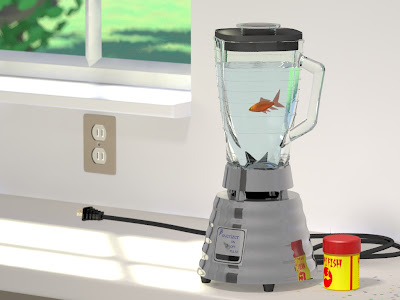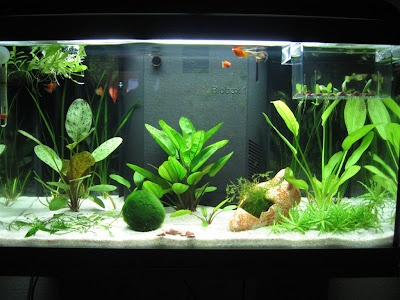Sunday, January 25, 2009
Bull Shark Fish Picture: Carcharhinus leucas



...Read the rest of this entry
Posted by uLiany at 1:18 PM 0 comments
Labels: fish picture, shark picture
European Anchovy Fish Pictures: Engraulis encrasicolus
Posted by uLiany at 1:15 PM 0 comments
Labels: family fishing, fish picture
Lemon Tang Fish Pictures: Acathurus sp.

Posted by uLiany at 1:10 PM 0 comments
Labels: fish picture
Pacific Halibut Fish Picture

 ...Read the rest of this entry
...Read the rest of this entry
Posted by uLiany at 1:03 PM 0 comments
Labels: fish picture
Mudskipper Fish Picture



 ...Read the rest of this entry
...Read the rest of this entry
Posted by uLiany at 12:57 PM 0 comments
Labels: fish picture
Lake Sturgeon Fish Picture


 ...Read the rest of this entry
...Read the rest of this entry
Posted by uLiany at 12:41 PM 0 comments
Labels: fish picture
Sunday, January 11, 2009
3D Raytraced Fish Picture Inside a Blender

3D Raytraced Fish Picture Inside a Blender. Great picture!
...Read the rest of this entry
Posted by uLiany at 12:31 AM 0 comments
Labels: fish picture
Beautiful Guppies Fish Aquarium Picture
Posted by uLiany at 12:20 AM 0 comments
Labels: aquarium, fish picture
Goldfish Aquarium Picture

This is the picture of a Goldfish aquarium. A wallpaper for your desktop
...Read the rest of this entry
Posted by uLiany at 12:02 AM 0 comments
Labels: fish picture
Saturday, January 10, 2009
Three Lobster Pictures

This is the species of lobster found in floridas. Big enough to catch.
...Read the rest of this entry
Posted by uLiany at 11:40 PM 0 comments
Labels: fish picture
Tips on Fly Fishing Knots
Before you tighten a knot, moisten it with saliva or with water you are fishing on. This will help the knot slide and seat properly. Lubrication also decreases excessive heat which can weaken the monofilament. Heat is generated by friction created when the knots are drawn up tight. Moistening the knot will reduce this heat and allow you to have good, strong knots.
Tighten knots with a steady, continuous pull. This is called seating the knot. Make sure the knot is tight and secure. To check this, pull on the line and leader to be sure it holds. It’s better to test its strength before you cast rather than to have it break once you get a hook.
There are plenty of books available that give step-by-step instructions on how to properly tie specific knots. You can also find many tutorials online that can show you how to tie specific knots.
You will need to know how to secure your line to the reel. This is called “Backing to the fly reel” and there is a specific knot as to how to achieve that. When you are backing to the fly line, you should use either an Albright Knot or a Nail Knot. The Nail Knot is also good for using when tying the fly line to the leader.
When securing the leader to the tippet, good knot choices include the Surgeon’s Knot or the Barrel Knot. Securing the tippet to the fly can be achieved easily with a Clinch Knot or a Duncan’s Loop.
It has been said that the weakest part of a fly fisherman’s equipment is his knots. A fighting fish will test every link in between the angler and itself. If one of these link is lacking, the line will break and the fish will be lost. Unless you’re really eager to share a “the one that got away” story, learning to tie knots can be the most important part of your fly fishing experience.
Some fly fishing knots are simple to do – others are a little more complicated. Practice tying knots before you get on the water. Become proficient at it and be sure you can do it in low light in case you have a broken line. There is no one knot best for any specific situation – the choice is personal. But when you are fly fishing, you need to depend on your knots and it’s worth taking the time to learn properly.
Posted by uLiany at 11:11 PM 0 comments
Friday, January 9, 2009
Parrot Fish Scaridae Picture
It's hard to decide which of the colorful parrot fish's many unique characteristics is most remarkable.
Posted by uLiany at 11:44 PM 0 comments
Labels: fish picture, fishing and hunting
Thursday, January 8, 2009
Almacoj Fish Picture
Posted by uLiany at 11:51 PM 0 comments
Labels: fish picture, fishing and hunting
The Jellyfish Aquarium Picture

The jellyfish aquarium looks nice as they emits beautiful light and produce such interesting effects. Nice touch for your desktop.
...Read the rest of this entry
Posted by uLiany at 12:16 AM 0 comments
Labels: fish picture
Saturday, January 3, 2009
Moody Aquarium Fishing Tank Picture
Posted by uLiany at 12:27 AM 0 comments
Labels: fish picture
Friday, January 2, 2009
Flying Fish Pictures
Posted by uLiany at 11:57 PM 0 comments
Labels: fish picture, fishing safety, fishing snapper, sailfish fishing
Shiner Perch Picture: Cymatogaster aggregata
Posted by uLiany at 12:06 AM 0 comments
Labels: family fishing, fish picture
Thursday, January 1, 2009
Tropical 3D Aquarium Picture

Nice picture for your desktop wallpaper.
...Read the rest of this entry
Posted by uLiany at 11:53 PM 0 comments
Labels: fish picture, fishing festival








